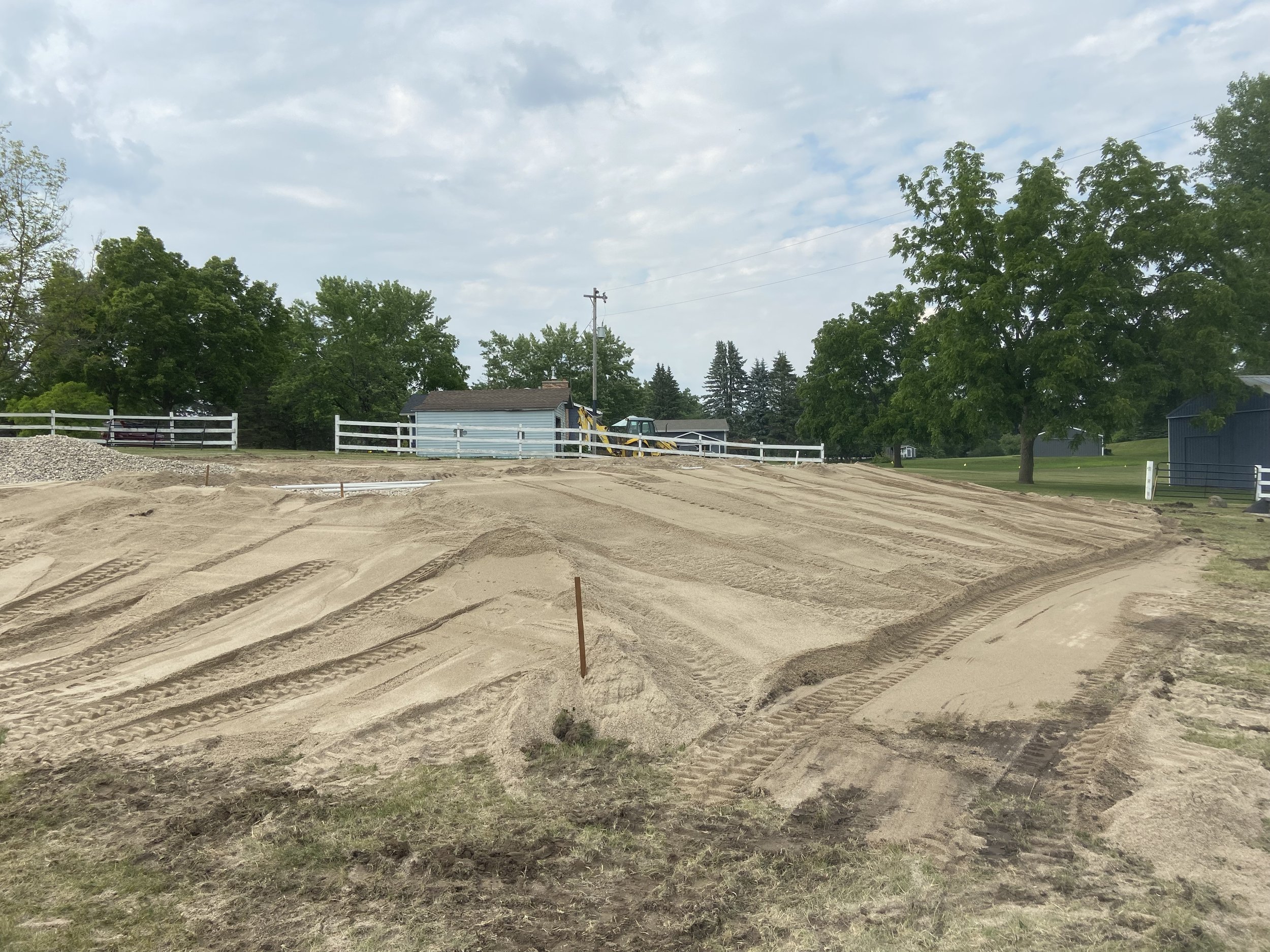Residential - Mounds
Mound systems were developed in the early 1970s to overcome soil and site conditions, which limit the use of trenches and beds. Limiting conditions include high water tables, shallow soil depth to bedrock, slowly permeable soil, or soil too coarse for treatment.
A sewage treatment mound is nothing more than a pressure bed elevated by clean sand fill to provide adequate separation between where sewage effluent is applied and a limiting soil layer.
The mound system consists of septic tank(s) followed by a pump tank. Effluent is dispersed evenly via the pump into the absorption bed, where it flows through the clean sand material and undergoes biological, chemical, and physical treatment. It then passes into the underlying soil for further treatment and dispersal to the environment. A minimum of twelve inches of cover material which is crowned to shed surface water is placed over the top of the mound with the upper six inches being topsoil.


